5 Aids to Help Students Set Learning Goals
A MiddleWeb Blog
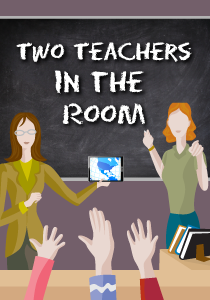
Resolutions feel too regimented, and they often lead to the stress of needing to do something different – something “better” simply because it’s a new year. Yet all too often, the hustle and bustle of everyday responsibilities yield little or no wiggle room.
And resolutions often fizzle out way before February even comes to an end. Does that sound familiar? For me it makes sense to avoid the “New Year = new me” promises and take a more realistic approach. Here’s what I do.
Goal-setting all year long
I set goals throughout the year. It is a way of life rather than a potentially pressurizing New Year “do it to prove something to yourself” kind of thing. It’s about what I can do on a consistent basis to create positive habits and successful routines that help me to achieve the results I am looking for.
Most important, it’s about continually evolving and growing. And with this process comes the excitement of making resolutions to myself anytime. I do not feel the pressure of a New Year to-do list. I just strive to stay mindful of my flexible process all year long.
Year round goal making for students, too
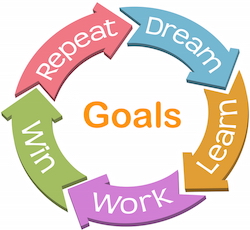
We want to set students up so they develop that determined resiliency they need to be successful. Setting goals, then evolving and redefining goals as the realities of learning unfold through our actions. If you are looking for a relevant text to get the conversation started with your students, check out what Michael Jordan has to say about setting goals and maintaining the pursuit of excellence.
In our role as guides and facilitators, we need to take every opportunity to help students notice and monitor their goals and achievements. Here are some tips for co-teachers (or any teacher) to help students become self-regulators and learn to trigger their executive functioning skills.
Five ways to help students focus on goals
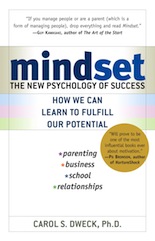
2. Have them use individual goal sheets. Work with students to isolate personal and academic goals for themselves within intervals throughout the year. Writing goals can help prepare their minds and attitudes for actions that, over time, solidify a self-regulated and disciplined learner. Check out how to create SMART goals (from UC San Diego’s TRIO Outreach Programs) that launch your students toward maintaining healthy habits of mind!
3. Have them jot down ‘success’ notes. A simple monthly calendar is an easy way for students to keep track of their success. They can jot down one way they made progress—it could be content they mastered, a new concept they finally understand, a new vocabulary word they can use in context—or anything that shows they moved forward in some way. Just imagine how they will feel at the end of the month when they can reflect on a month’s worth of individual progress. Talk about motivating and instilling a love of learning!
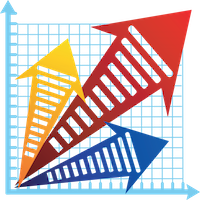
5. Have them write about their learning journey. Journaling is a relaxing way to get students to reflect on their effort to reach valuable goals. Students may jot down their thoughts about their learning experiences for the day or the week. Journaling provides time for students to sift through the noise in their minds and allows them to focus on specific reasons to feel disappointed or to celebrate their academic performance and focus on their progress.
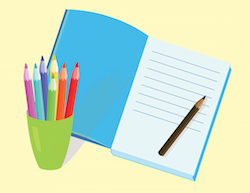
Journaling can also empower students to find the language that can lead to positive actions toward persevering. But don’t take my word for it. Here’s a post from Todd Finley, who argues that classroom journaling is a must!
What goal-setting routines do you follow? Or are you a die-hard resolution maker? How will you encourage goal setting with students as 2015 rolls out?
Please share your perspective and stories with us! Looking forward to the conversation!


































Thank you Elizabeth for your blog and tips for successful goal making. I teach special education, K through 6th grades, and have students make monthly goals on their paper chart. But we sometimes forget those goals in the process of learning other skills. Your tips were very helpful. I also love the idea of journal writing when obtaining our goals which will increase meta-cognition of our students.
Susan Clawson, Salt Lake City, Utah
Susan, I am so glad to hear that this post provided a bit of refocus, regrouping, and reminding! It’s so easy to get immersed in the shuffle of academic tasks–we all do! And it’s great to be open to reminders to make the time to zoom in on the essence of learning–helping our students grasp on to self-motivation, self-regulation, and engagement! And meta-cognitive tasks will lead the way to deeper learning! Come back and share how it’s going for you and your students! All the best! Thanks so much for sharing!
Hi,
I really enjoyed reading this entry and a lot of your comments relate to what I teach today in my special ed adult transition program. In point 1, it is crucially important to develop goals that can be achievable. Every student in my classroom has a different learning level, so to set goals equally to each student would be unfair to the class. In point 2, using individualized goal sheets is an excellent idea. With my students, I have them complete several career inventory sheets that bring out what careers they may want to pursue in the near future. Number 3 is important because it visually lets them see their successes. If they cannot see this, their motivation is harder to strengthen. Number 4 relates to charting a specific goal. With my students, they usually develop many goals over a span of a semester, but I do my best to narrow it down to one main goal that we can work toward. By doing this, it gives them an ending mission and a positive internal feeling when it is reached. Finally, with point 5, it is important to have students write down and document their steps it took to reach their ending point. By being able to look back and reflect, this allows the student to see the hard work and time that was put in to reach this ending result. I absolutely loved your entry and I thank you for letting me read it today, I will definitely be applying more of these topics into my classroom instruction.
Thank you Elizabeth
I am a motivator and role model to girls. Your writings have helped me to find very good points to encourage girls to achieve their goals. Write more.